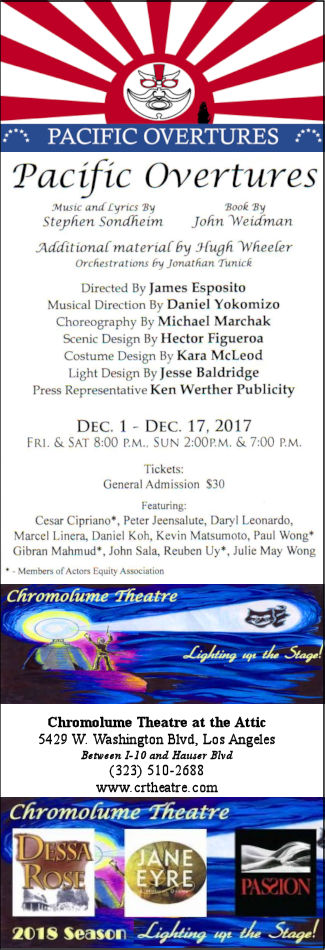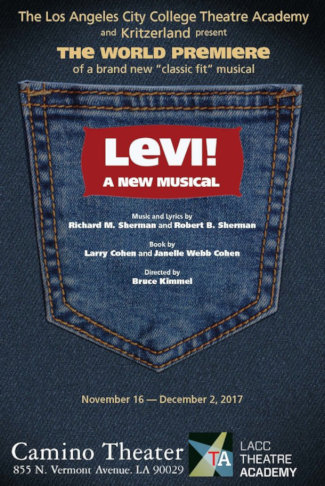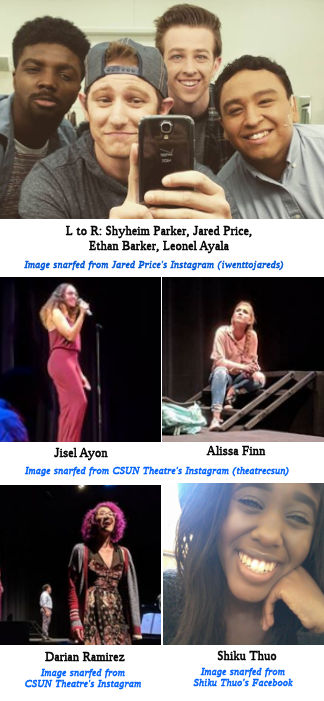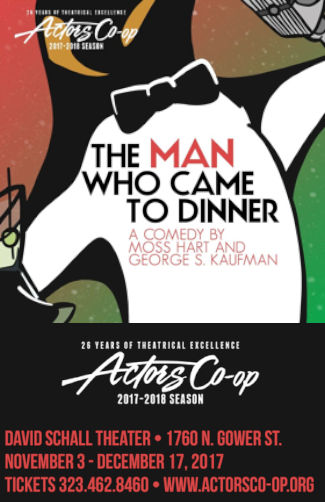
 When one thinks of the musicals of Stephen Sondheim (FB), one often thinks of theatre in the large. The full size Broadway stage, houses with over 800 seats, fully executed scenery and staging. But often one gains a greater appreciation of Sondheim in the small staging, the intimate theatre environment. Think about small intimate creative stagings of Into the Woods, Sweeny Todd, or Assassins: these often provide insights and understanding that the Broadway staging doesn’t give.
When one thinks of the musicals of Stephen Sondheim (FB), one often thinks of theatre in the large. The full size Broadway stage, houses with over 800 seats, fully executed scenery and staging. But often one gains a greater appreciation of Sondheim in the small staging, the intimate theatre environment. Think about small intimate creative stagings of Into the Woods, Sweeny Todd, or Assassins: these often provide insights and understanding that the Broadway staging doesn’t give.
Intimate staging of Sondheim’s successes are somewhat easy to find. Stagings of the shows that fared less well on Broadway — that’s a different story. Take Pacific Overtures, for example. First produced on Broadway in 1976, it ran for 6 months (and subsequently had a mounting at the LA Civic Light Opera later that year). I don’t have a recollection of the LACLO performance; it is possible that I didn’t go to it (I do remember the show after it, Irma La Douce). It’s had a few mountings on Broadway or Off-Broadway since then, and there have been even fewer mountings in Los Angeles. The last mounting was in 1998 by the East-West Players. So when I saw that the Chromolume Theatre (FB) 2017 season announcement included Pacific Overtures, I was intrigued. Chromolume is an under-50 seat theatre — how the hell were they going to pull off a full Sondheim musical — especially one as complicated as Overtures — on a small black box stage with no fly space and limited cast size?
Saturday night we found out. The answer is: they pulled it off by embracing the minimality in the staging, instead of trying to duplicate the grand Kabuki stylings of the original. There are still Kabuki-ish elements, to be sure; however, there is no use of traditional Kabuki whiteface, and there are no set stylings to speak off. For me, the minimalism worked. It felt … Japanese in styling, although I must admit that I am far from being an expert — or even familiar — with what is traditional Japanese style. From reading the background on this story, that was Sondheim’s intent: to provide a Westernized version with a Japanese feel. However, in today’s sensibilities, it does raise some interesting questions of cultural appropriation that, given the underlying message in the story, create an even more interesting contrast and echo.
The message in the story — that’s right, I haven’t explained that yet. Pacific Overtures — with music and lyrics by Stephen Sondheim (FB), book by John Weidman, additional material by Hugh Wheeler, and original orchestrations by Jonathan Tunick — tells the story of the (re-)opening of Japan to Western culture in the late 1850s and thereafter (for those that remember the miniseries Shogun, this is the reopening after the post-Shogun isolation). It begins with the arrival of Commodore Perry to Japan in 1853, and looks at the reaction to that arrival in the traditional Japanese culture of the Emperor and Shogunate — a culture that had been isolated from other nations for over 250 since the Spanish and Portuguese were expelled (i.e., the Shogun period). It also explores the exploitation and westernization that occurred thereafter — often in the names of “commerce”. [As an aside, it created an interesting parallel with the gentrification occurring today in South LA, where again predominately white men are exploiting a culture seen by implication as inferior and worthy of updating.] The musical ends with a political commentary on Japan’s success, adopting a Western commerce with a uniquely Japanese attitude, often beating the West at their own game.
The means of telling the tale centers around the use of “reciter” — essentially, a narrator — combined with a focus on two primary characters: a minor Samurai named Kayama Yesaemon and a sailor named John Manjiro. The remaining members of the ensemble played all the other characters. Chromolume’s seeming conceit and framing (by director James Esposito (FB)) was that this was a group of actors wandering in and presenting the story, which explained the small number and the use of men to play women (without having to go full on Kabuki, where that is the tradition). Reading some of the reviews before the show gave the impression this was more of a concert staging, but I never got that feeling. This seemed fully executed, albeit in the small.
 The performances developed by the actors and the director, James Esposito (FB), were strong. I remember watching the faces for the nuances of performance and find them. The stylized movements seemed appropriate, and the character interplay was good. The voices were strong — most notably Paul Wong (★FB; FB) [Reciter], Cesar Cipriano (FB) [Kayama Yesaemon], John Sala (FB) [Ensemble, Warrior, Russian Admiral, Sailor], and Gibran Mahmud (FB) [Ensemble, Fisherman, Dutch Admiral, Second Councilor, Sailor]. These four had voices that just blew me away (which is not to say that the others weren’t great either). The one whose face won me over was Julia May Wong (FB) [Ensemble, Tamate, Young Boy, Geisha Girl]. She just had great facial expressions in all of her scenes; she also wins the award for the best bio (a haiku: “About to Give up / Chromolume came to save her. / Honored. Humbled. Thanks.”).
The performances developed by the actors and the director, James Esposito (FB), were strong. I remember watching the faces for the nuances of performance and find them. The stylized movements seemed appropriate, and the character interplay was good. The voices were strong — most notably Paul Wong (★FB; FB) [Reciter], Cesar Cipriano (FB) [Kayama Yesaemon], John Sala (FB) [Ensemble, Warrior, Russian Admiral, Sailor], and Gibran Mahmud (FB) [Ensemble, Fisherman, Dutch Admiral, Second Councilor, Sailor]. These four had voices that just blew me away (which is not to say that the others weren’t great either). The one whose face won me over was Julia May Wong (FB) [Ensemble, Tamate, Young Boy, Geisha Girl]. She just had great facial expressions in all of her scenes; she also wins the award for the best bio (a haiku: “About to Give up / Chromolume came to save her. / Honored. Humbled. Thanks.”).
In the lead positions, as noted before, were Wong as Reciter, Cipriano as Yasemon, and Daryl Leonardo (FB) as John Manjiro. Wong was strong as the Reciter, carrying the burden of the exposition on his back, helping to explain the story to the audience. Cipriano and Leonardo had a good chemistry between them, same strong, and conveyed emotion well.
Rounding out the cast, in addition to the three previously mentioned, were Marcel Licera (FB) [Ensemble, Lord Abe, Old Man, Sumo Wrestler], Peter Jeensalute (FB) [Ensemble, Mother, American Admiral, Merchant], Daniel Koh (FB) [Ensemble, Madam, British Admiral, Third Councilor], and Kevin Matsumoto (FB) [Ensemble, Commodore Perry, French, Admiral, Sailor]. Reuben Uy (FB) [Ensembleu/s, Madamu/s, British Admiralu/s, Third Counciloru/s] was the understudy. All were good: I particularly enjoyed the facial expressions in the “Welcome to Kanagawa” number, the difference characterizations in “Please Hello”, the Emperor puppet, and Matsumoto’s dance as Com. Perry.
Uncredited in the program as the horse and the servant was the ASM, Louis Lake III (FB). Lake’s performance was a hoot and quite a surprise.
Michael Marchak (FB)’s choreography seemed appropriately Japanese, but then again, I’m not an expert on the subject. All I know is that the movement worked well and was enjoyable to watch, and kept up with the various references thrown into the mix by Sondheim.
Music was under the direction of Daniel Yokomizo (FB), who also led the on-stage but off-stage band on piano, assisted by (at our performance) John A. Graves [Bass] and Jeff Fish (FB) [Percussion]. Note: At some performances, bass is provided by Alex Moore (FB), and percussion by Anthony Jones (FB) or Lee Piatelli (FB). For its size, the orchestra was strong. Pacific Overtures is not a show that requires a large orchestra, as it isn’t dependent on traditional Western instruments as much as many shows.
Turning to the production side of the staging. As you can see from the images to the right, Hector Figueroa (FB)’s scenic design was minimal: some platforms, tan and red backgrounds, and a hiding place for a character or two. Necessary context was provided by properties or the costumes, which were designed by Kara McLeod (FB). The costumes seemed reasonably appropriate; again, I’m not an expert on Japanese attire of tha period. Lighting design was by Jesse Baldridge (FB), and it worked well to establish the mood. There is no explicit credit for sound design, but James Esposito (FB) has done it for some past shows so it is likely he did it again. The sound worked well this time around. Veronica Vasquez (FB) was the stage manager, and the aforementioned Louis Lake III (FB) was the asst. stage manager… and the 🐎 :-). Publicity was by Ken Werther (FB).
Pacific Overtures runs for one more weekend at Chromolume Theatre (FB), with performances today at 2pm and 7pm, and next Friday and Saturday at 8pm, and Sunday at 2pm and 7pm. Tickets are available through the Chromolume Website, discount tickets may be available through Goldstar. This really is a production you should see if you can: Pacific Overtures just isn’t produced all that often, and this may be one of the few chances you have to see a great production in an intimate space by a company that loves them some Sondheim.
Chromolume Theatre (FB) has just announced their 2018 season, and it is three shows that I haven’t seen (in fact, two for which I didn’t even have the cast album until the announcement): Dessa Rose with book and lyrics by Lynn Ahrens and music by Stephen Flaherty [Feb 2 2018 – Feb 25 2018]; Jane Eyre – The Musical with music and lyrics by composer-lyricist Paul Gordon and a book by John Caird [Jul 13 2018 – Aug 5 2018], and Passion with music and lyrics by Stephen Sondheim and a book by James Lapine [Nov 9 2018 – Dec 2 2018]. We plan to subscribe in the next couple of weeks. You should too! Season subscriptions are only $60, which is $20 per show… and Goldstar is $18 per show plus service fees. What a bargain, and you help guarantee this little theatre’s survival.
***
Ob. Disclaimer: I am not a trained theatre (or music) critic; I am, however, a regular theatre and music audience member. I’ve been attending live theatre and concerts in Los Angeles since 1972; I’ve been writing up my thoughts on theatre (and the shows I see) since 2004. I do not have theatre training (I’m a computer security specialist), but have learned a lot about theatre over my many years of attending theatre and talking to talented professionals. I pay for all my tickets unless otherwise noted. I am not compensated by anyone for doing these writeups in any way, shape, or form. I currently subscribe at 5 Star Theatricals (FB) [the company formerly known as Cabrillo Music Theatre (FB)], the Hollywood Pantages (FB), Actors Co-op (FB), the Chromolume Theatre (FB) in the West Adams district, and a mini-subscription at the Saroya [the venue formerly known as the Valley Performing Arts Center (VPAC)] (FB). Through my theatre attendance I have made friends with cast, crew, and producers, but I do strive to not let those relationships color my writing (with one exception: when writing up children’s production, I focus on the positive — one gains nothing except bad karma by raking a child over the coals). I believe in telling you about the shows I see to help you form your opinion; it is up to you to determine the weight you give my writeups.
Upcoming Shows:
This afternoon brings the Colburn Orchestra at the Saroya (the venue formerly known as the Valley Performing Arts Center (VPAC)) (FB). I probably won’t write that one up. The weekend encompassing Chanukah sees us back at the Saroya (FB) for the Klezmatics (FB). We also hope to squeeze in a performance of A Christmas Story at the Canyon Theatre Guild (FB). We might also go to the 58th Annual L.A. County Holiday Celebration, as they are featuring Klezmer Music from 3-6pm on Dec 24, and we can take advantage of Metro to avoid the traffic. Of course there will also be the obligatory Christmas Day movie — who knows — perhaps it’ll be the upcoming The Greatest Showman. Afterward: The obligatory Chinese Food.
If I can get tickets, January will start out with the Jason Graae/Faith Prince concert at the Rubicon Theatre (FB) in Ventura [tix]. The next weekend brings Aladdin at the Hollywood Pantages (FB). The rest of January is currently open, as January tends to be a quiet theatre month. We’ll see what fills up.
February is busier. It starts with the Cantor’s Concert at Temple Ahavat Shalom (FB). The following weekend brings our first Actors Co-op (FB) production of 2018: A Walk in the Woods. Mid-week brings opera: specifically, Candide at LA Opera (FB). That is followed the next weekend by the first production of the Chromolume Theatre (FB) 2018 season, Dessa Rose. The month concludes with Dublin Irish Dance Stepping Out at the Saroya (the venue formerly known as the Valley Performing Arts Center (VPAC)) (FB).
March was supposed to start with the MRJ Man of the Year dinner, but I’ll miss that because they pushed back from their advertised date right on top of my non-refundable tickets to the LA Premiere of the musical Allegiance at the Japanese American Cultural and Community Center (FB). This is followed by a HOLD for Steel Pier at the UCLA School of Television, Film, and Theatre (FB). The penultimate Friday of March brings Billy Porter singing Richard Rodgers at the Saroya (the venue formerly known as the Valley Performing Arts Center (VPAC)) (FB). The last weekend of March is open for theatre, but there will be the Men of TAS Seder. Currently, we’re booking all the way out in mid to late 2018! We may also be adding a CTG subscription, given their recent announcements regarding the next season.
As always, I’m keeping my eyes open for interesting productions mentioned on sites such as Better-Lemons, Musicals in LA, @ This Stage, Footlights, as well as productions I see on Goldstar, LA Stage Tix, Plays411 or that are sent to me by publicists or the venues themselves. Note: Lastly, want to know how to attend lots of live stuff affordably? Take a look at my post on How to attend Live Theatre on a Budget.



 I monitor all sorts of theatre related feeds, one of which is
I monitor all sorts of theatre related feeds, one of which is 
 Sometimes, second tries are better. Hopefully, that will be true for this writeup, because after four hours, when I went to post the first version of this writeup, WordPress not only ate it with an unknown error, but conveniently hadn’t been saving a backup. Of course, it doesn’t help that I’m writing this with a headache I didn’t have the first time. [Update: I discovered Monday morning that
Sometimes, second tries are better. Hopefully, that will be true for this writeup, because after four hours, when I went to post the first version of this writeup, WordPress not only ate it with an unknown error, but conveniently hadn’t been saving a backup. Of course, it doesn’t help that I’m writing this with a headache I didn’t have the first time. [Update: I discovered Monday morning that 

 A few months ago, when
A few months ago, when  Luckily, for you the reader, my Facebook-foo and internet search abilities are strong, and I was able to find you some pictures of the actors, and I’m familiar with the songs (and hopefully, I remember who sang them). But I do encourage CSUN Theatre to beef up their programs. It is only an additional black and white sheet — perhaps 10¢ a program — and it could make a big difference in the careers of your actors.
Luckily, for you the reader, my Facebook-foo and internet search abilities are strong, and I was able to find you some pictures of the actors, and I’m familiar with the songs (and hopefully, I remember who sang them). But I do encourage CSUN Theatre to beef up their programs. It is only an additional black and white sheet — perhaps 10¢ a program — and it could make a big difference in the careers of your actors.
 Have you ever had an invited guest in your house who overstayed their welcome? A person whose visit you looked forward to initially, but who threw your home into disarray and your life into shambles? Someone with such an inflated sense of self that they believe the world revolves around them, and they never see the damage that their meddling can create in the lives of others? Someone who is a master manipulator of people and can convince them to do whatever they want them to do, no matter who gets trampled in the process?
Have you ever had an invited guest in your house who overstayed their welcome? A person whose visit you looked forward to initially, but who threw your home into disarray and your life into shambles? Someone with such an inflated sense of self that they believe the world revolves around them, and they never see the damage that their meddling can create in the lives of others? Someone who is a master manipulator of people and can convince them to do whatever they want them to do, no matter who gets trampled in the process? In the lead position was
In the lead position was 
 There are many ways that I discover the shows I go see — especially the non-musical plays. Most often, they come through a season subscription — rare is the small company that only does musicals, and so the artistic director’s vision introduces me to new plays. Occasionally, I know the playwright, such as with
There are many ways that I discover the shows I go see — especially the non-musical plays. Most often, they come through a season subscription — rare is the small company that only does musicals, and so the artistic director’s vision introduces me to new plays. Occasionally, I know the playwright, such as with  That history is the background and setting of This Land. It tells the intertwined stories of five families representative of the various eras of Watts: the original Tongva settlers interacting with the first Missions and Ranchers in 1843 (Tomas, Toya, and Enrique), the first influx of the Americans in 1848 (Patrick), the first black families moving into the area in 1949 and later in 1965 (Maeve and James, Leola and Leslie), the transition as the hispanic families change the communities yet again in 1992 (Fidel and Ricardo, Sharon and Mel), and the wave of gentrification as developers purchase homes from families to transform the area yet again in the near future of 2020 (Ricardo, Della, and Dalton). The storytelling is intertwined, moving back and forth between the historical periods. It shows how — in true LA fashion — there was hatred when new cultures came in, yet
That history is the background and setting of This Land. It tells the intertwined stories of five families representative of the various eras of Watts: the original Tongva settlers interacting with the first Missions and Ranchers in 1843 (Tomas, Toya, and Enrique), the first influx of the Americans in 1848 (Patrick), the first black families moving into the area in 1949 and later in 1965 (Maeve and James, Leola and Leslie), the transition as the hispanic families change the communities yet again in 1992 (Fidel and Ricardo, Sharon and Mel), and the wave of gentrification as developers purchase homes from families to transform the area yet again in the near future of 2020 (Ricardo, Della, and Dalton). The storytelling is intertwined, moving back and forth between the historical periods. It shows how — in true LA fashion — there was hatred when new cultures came in, yet